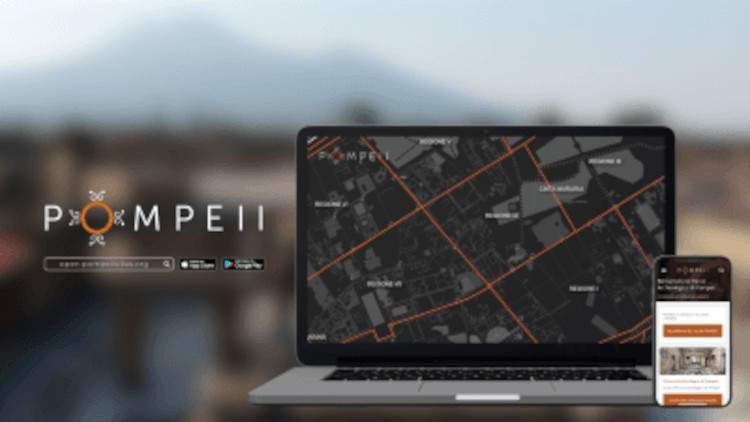Open Pompeii is born: the wealth of data of the Archaeological Park of Pompeii, collected over decades, is now available to everyone with a click, for consultation, study and in-depth study. An archive available and accessible to all, not just scholars, and with opportunities to interact and integrate useful information.
Pompeii opens its digital archives, with a view to maximum accessibility and interactivity. Available online are data, information, images and videos on each archaeological structure, houses and buildings, artifacts, and frescoes present or detached, with indication of their provenance and current location, with related bibliography and possibility of cross-referencing data. All this will be available to visitors, scholars, tour operators, guides or enthusiasts, who will be able to access the system from any device.
The system will also be accessible through theMy Pompeii App implemented for the purpose of enhancing the visit to the site. The app has the function of an audio guide and will allow the visitor to interact with the Park by sending reports during the visit and receiving direct and immediate feedback.
"The Open Pompeii system, which will provide access to an immense database of documents and information, never before made available to the public, is an operation that can be described as radical and courageous and is part of the wider effort of the Ministry of Culture," said Park Director Gabriel Zuchtriegel. “Through the National Plan for the Digitization of Cultural Heritage of the Central Institute for the Digitization of Cultural Heritage - Digital Library, the Ministry is implementing a process of digital transformation, of all state cultural places that own, protect, manage and enhance Cultural Heritage, with a view not only to full accessibility but also to improving the protection and knowledge of heritage. With Open Pompeii we reach an important milestone in this area, but it is by no means a point of arrival: digitization will continue in the coming years, and precisely for this reason the feedback from the users themselves will be invaluable.”
Consultation of information is based on asimple and intuitive interface that, through a map, allows the user to interact with the system and view the various levels of information, navigating between regions, insulae, cadastral units and rooms. Using the built-in search engine, it is possible to search for the desired information about cadastral units or archaeological finds.
The database that feeds the Open Pompeii information system is the result of an aggregation of data from the main management systems in use at Pompeii (SI-Pompei for geographic data and master information, SIAV for Catalographic information, and Tolomeo for historical archival photos).
Thanks to an agreement with the Archaeological Park of Pompeii, the project has received the technical and scientific contribution of the CINI Cons ortium (National Interuniversity Consortium for Informatics) the main point of reference for national academic research in the fields of Informatics and Information Technology, with the collaboration of Scuola IMT Alti Studi Lucca (a university, research and higher education institution) and GSSI Aqu ila (Gran Sasso Science Institute of L’Aquila), at the top of the best universities in Italy for the research conducted in all its four areas of Physics, Mathematics, Computer Science and Social Sciences.
It made use of interdisciplinary expertise channeled in synergy toward the implementation of the cultural heritage application domain: archaeologists, archivists, experts in ancient art history, data organization and analysis, IT, machine learning and artificial intelligence. The result was an innovative system that continues to be developed and expanded to provide for more and more functions and accessibility to users.
Rocco De Nicola, rector of IMT Lucca, Maria Luisa Catoni, Agnese Ghezzi, Ludovico Iovino Riccardo Olivito, Fabio Pinelli, Alessandro Poggio collaborated.
RUP and Project Execution Management: Alberto Bruni of the Pompeii Archaeological Park with the collaboration of Salvatore Gallo and Fabio Garzia.
The project is funded with community resources from PON Culture and Development - Grand Project Pompeii and the app with PON Legality resources from the Ministry of the Interior.
Open Pompe ii can be accessed at this link
 |
| Pompeii opens its digital archives: Open Pompeii is born |
Warning: the translation into English of the original Italian article was created using automatic tools. We undertake to review all articles, but we do not guarantee the total absence of inaccuracies in the translation due to the program. You can find the original by clicking on the ITA button. If you find any mistake,please contact us.